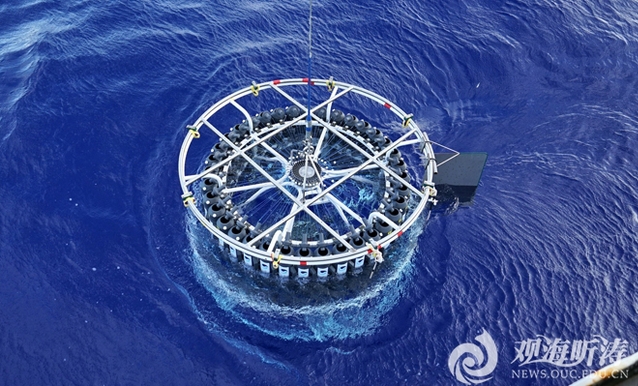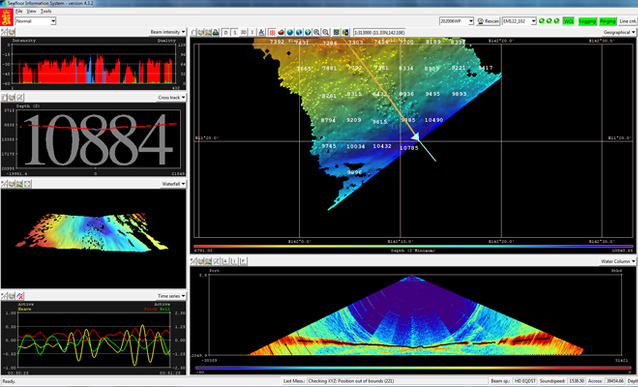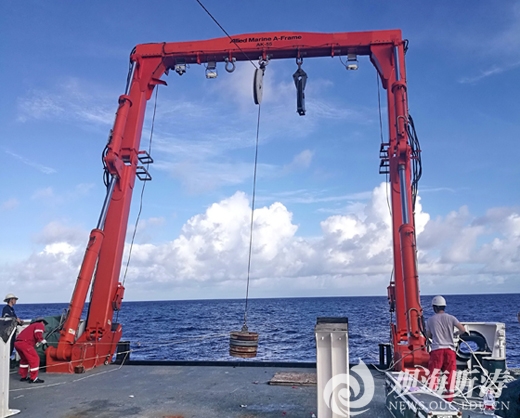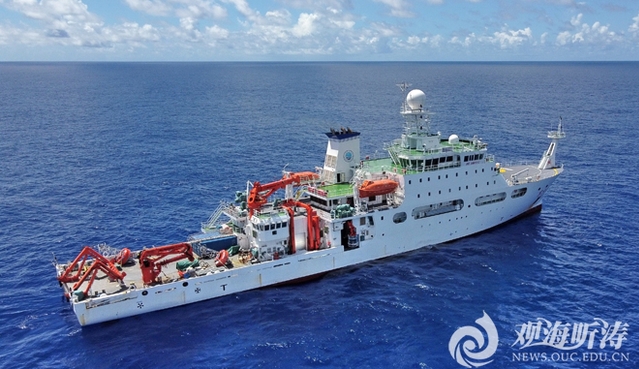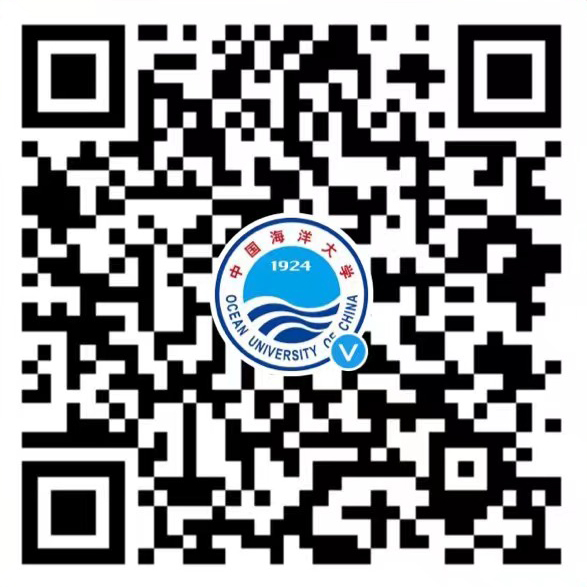Recently, Dong Fang Hong 3, a new-type 5,000 DWT research vessel, successfully completed the sea trial on the 10,000-meter depth performance of ship-borne research equipment in the Challenger Deep of Mariana Trench, the deepest sea area in the world. The maximum depth of the tested area is more than 10,900 meters. It is the first time in the world for a new-type research vessel to carry out long-term, continuous and intensive sea trial of research equipment at a depth of 10,000 meters, which has laid a solid foundation for Dong Fang Hong 3 to further explore the deep ocean and undertake major national research tasks.
The tested equipment included two sets of 10,000 -meter CTDs (Conductivity, Temperature, Depth), a deep-sea multi-beam bathymetry system, a 10,000 -meter single-beam echo sounder and a deep-water sub-bottom profiler. Five sets of winch systems with cable lengths of 10,000 meters and 12,000 meters were also tested for their deep-water retracting and extending performance. During the test, the two sets of CTDs collected about 1,000 liters of precious seawater samples and accurate CTD data at a depth of over 10,000 meters.
The acoustic equipment test covered a total distance of 150 km, and obtained the submarine topography and sub-bottom profile data of the deepest sea area of Challenger Deep. On the north slope of the trench, with the help of the low underwater radiated noise of the ship, the coverage width of the deep sea multi-beam bathymetry system reached 41 km, more than a third of the nominal maximum coverage width of the equipment. The sea trial shows that the above-mentioned equipment all reaches or exceeds its nominal technical standards in the water depth of 10,000 meters.
The timely, safe and efficient completion of the mission was made possible by the approval to conduct research in the Mariana Trench, as well as the rigorous preliminary demonstration, careful planning and meticulous on-site organization. The sea trial trained the whole crew including the research team, and accumulated practical experience for them to carry out research under conditions of extreme depth and intensity. It helped equip them with the ability to solve unexpected problems. The standardization of management was enhanced, and the advanced functions of marine research equipment were further developed, providing support in all aspects and the ability to obtain high-quality data and research samples for marine multidisciplinary observation.
